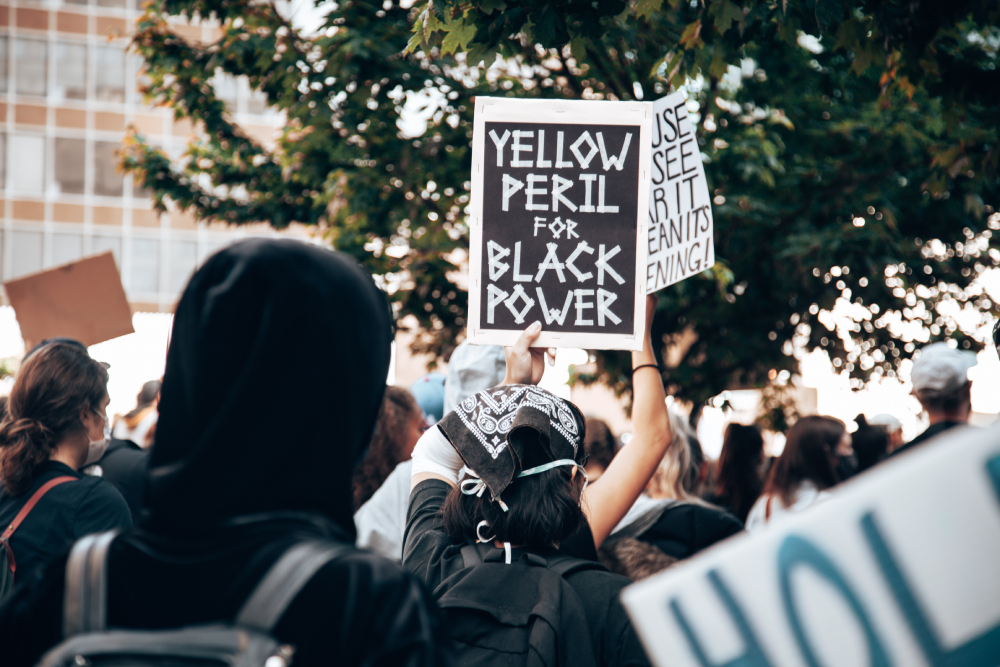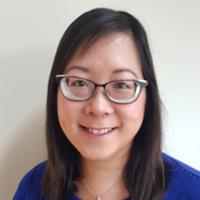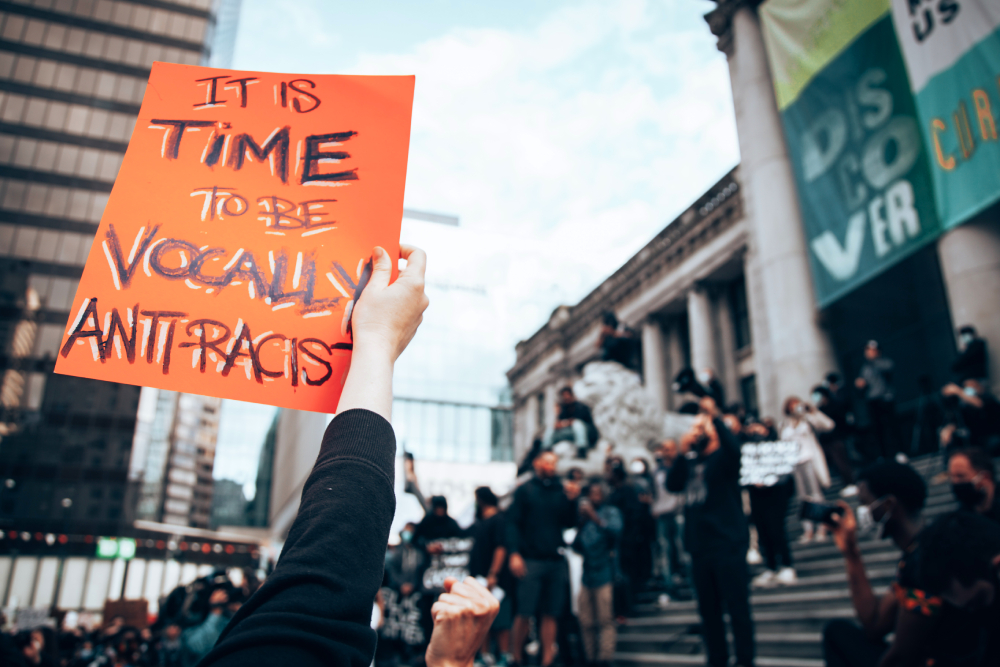The explosion of unrest in the U.S. in the wake of George Floyd’s death has led many Canadians to reflect on racism and white supremacy at home. Racism is alive and well in Canada. Don’t fool yourself into thinking it’s not. Of those who know the reality, some may be wondering how to be a better ally.
We are two health-care academics working in Calgary, one Chinese-Canadian and one Métis. We reflect continuously on our own journeys with experiencing racism, while owning our complicity in upholding racist structures in Canada.
We both actively work to be allies in the fight against racism. Merely extolling that Canada is “welcoming, open-minded and generous” with some diversity and inclusion policies does not automatically result in any real sense of belonging for Black, Indigenous and People of Colour. We share our stories in the hopes of showing what our lived experience has taught us in our lifelong work of allyship.
One key point is that if you or your loved ones have never experienced racism because you are white, then you have a privilege that BIPOCs have never had in Canada. If you are white, you cannot make any judgment about whether racism exists or not. This is the truth.
Amy Tan: As a Chinese-Canadian daughter of immigrant parents from Hong Kong, I had my share of cultural clashes at my home, school and community growing up in Richmond, B.C. By high school, I had internalized the message that I had a choice to make about my identity. I subconsciously denied my Chinese heritage as a teenager to try to fit in with Caucasian peers, while still being reminded daily that I wasn’t white. We didn’t eat steak and potatoes at home; I was called “ch**k” and “slant eyes”; I was regularly confused for other Asian students. I grew up knowing that belonging was conditional. If I behaved as I should — a helpful, agreeable, conscientious Chinese girl — I wouldn’t be hassled as much. I know now that this “model minority” construct is a myth that affirms white dominance, created to pit various ethnicities against each other.
Unfortunately, COVID-19 has created an increase in anti-East Asian sentiment. Violent attacks have occurred because people erroneously accuse us of either bringing coronavirus to Canada or being loyal to the Chinese government. My elderly Chinese parents are now too scared to leave their house in Vancouver for the first time in the 50 years since they immigrated here.
The Canadian government has passed racist laws against people of Chinese descent since 1871, with its exploitation of Chinese immigrants to do the dangerous work in building the Canadian Pacific Railway. Afterwards, there was a near total ban on immigration for Chinese people to Canada from 1923 to 1949 (this followed the prohibitive Chinese head tax enacted from 1885 to 1923). At the same time, Chinese residents in Canada were incorrectly blamed for the spread of diseases like leprosy and smallpox, leading to the xenophobic terminology “Yellow Peril,” which is unfortunately being resurrected today for COVID-19. Other oppressive practices occurred in the past to other East Asians, notably the internment of Japanese Canadians during the Second World War.
But all this pales in comparison to what Canadians of African and Indigenous descent have endured due to ongoing structural racism in this country.
Pamela Roach: Experiences of racism, discrimination and violence against Indigenous people stem from the colonial systems put in place before Confederation, on which Canada is founded.
Growing up in rural Alberta, with the privilege of being able to pass as a “white” Canadian, I regularly had to decide, as a child, who was safe to disclose my Indigeneity to, who would tolerate it and who wouldn’t. Colonization created an oppressive structure, leading to a lot of racist legislation that remains in place today, while leaders across the country claim there is no systemic racism in Canada. In Vancouver, 15 per cent of police stops in 2007-2018 involved First Nations people despite representing two per cent of the population. Indigenous people in federal prisons have increased to 30 per cent of total incarcerated while representing five per cent of Canada’s total population. The apprehension of Indigenous children at birth still happens today, and the forced sterilization of Indigenous women has been reported widely as recently as 2018.
Controlling family planning and removing Indigenous children to be cared for by white families, as we know was commonplace during the Sixties Scoop were ways for our systems to legally enforce assimilation, disrupt cultural continuity, and adversely impact the health of Indigenous People. We also know that many Indigenous children were sent to Indian Residential or Day Schools and subjected to physical, emotional and sexual abuse while being forcibly assimilated. Not only have residential schools caused ongoing trauma through this abuse and separation of families, they have left lasting health and social impacts on generations of families.
Similarly, Black Canadians are victims of over-policing and police brutality, and are over-represented in federal prisons and in the child welfare system. In Toronto, seven out of 10 of fatal shootings by police between 2013-2017 were of Black people, despite only making up 8.8 per cent of Toronto’s population at the time. In Vancouver, five per cent of police stops involved people who were Black, despite only comprising one per cent of the population from 2007–2018. The origins of anti-Black systemic racism have been traced back to the existence of slavery in Canada and causes persistent disadvantages in education, employment, and the criminal justice system.
Amy Tan: Playing by the rules to be part of the “model minority” allowed me to be “white-adjacent”: I wasn’t white, but I was seen by some white people as less “offensive” than other ethnicities. I had the great privilege to not have to grow up being scared of authorities such as police officers, unlike people who are Black or Indigenous.
In reality, the “model minority” concept is really about having implicit rules of engagement to make Asians stay silent about the white power structure that’s more overtly racist of other racialized and minority groups. My entire extended family, partly based on their own previous experiences of overt racism, all bought into the “model minority” requirement that allowed us to be “accepted,” albeit on the white power structure’s terms. Thus, my family and I have been complicit in anti-Black racism as Chinese-Canadians.
I’ve been complicit in perpetuating anti-Black racism by not calling out obviously racist comments that I heard in my Chinese community, and by striving to maintain the benefits I received by being a “model minority.” This is personally painful.
I now own my part in holding up racist structures while also acknowledging my privilege as a physician. It took me many years to embrace that I have a duty to use my areas of privilege for good to speak out against racism and injustice.
Pamela Roach: Likewise, as I navigated my own safety with disclosing my Indigenous identity, as someone who could be “white coded” I recognize the privilege I had to slide invisibly through potentially dangerous situations, a privilege not all Indigenous people have and that I still reflect on with shame, especially now as an adult when I feel more confident to confront oppression and racism head on.
The Truth and Reconciliation Commission’s report and Calls to Action were released five years ago. Can we look at those calls and say that we have really actioned them and made progress in shifting the structural barriers and systemic racism that disadvantages Black, Indigenous and Persons of Colour? I know I can’t.
I do work to develop and implement anti-racism strategies, but we are steeped in the tea of our society and working against a system that you also have to live within can feel like “swimming in treacle,” a phrase I have inherited from my English partner.

Both: What we need is allyship to improve equity for all.
Everyone benefits when we work to improve equity for all, including non-BIPOC people. Equity involves acknowledging and dismantling the structures that reinforce disadvantage for various people. Equality, the idea of treating everyone the same, is not the same as equity and doesn’t support people who have had generations of disadvantage. And in this moment, we know that anti-Black racism urgently needs to be combatted. It needs to be fought so urgently that people are risking their lives in the middle of a global pandemic to gather, protest and make their voices heard. Each and every one of us has the job of listening.
COVID-19 has laid bare how poorly Canadians are protecting and caring for marginalized populations, including Black, Indigenous and racialized immigrant communities. COVID-19 has disproportionately affected essential workers mainly comprised of racialized immigrants, refugees and migrant workers, continuing the long history of exploiting newcomers to do laborious work under harrowing conditions. In the U.S., Black Americans are dying from COVID-19 at 2.4 times the rate of Caucasians due to the underlying neglect of their social determinants of health, all stemming from systemic racism. How unjust is this systemic racism that even in a pandemic, Black Americans have not been spared from further disproportionate deaths by police violence?
We may not have white privilege, but we’ll use the privilege we do have to speak up for the human rights of those people who can’t. This is what we can do as anti-racist allies. We will not opt out. As Ibram Kendi states in his book How to be an Anti-Racist, anti-racism involves actively fighting racist policies and ideas that lead to racial inequity. There is no “neutral” in this space, so it’s not possible to be “not racist.”
In our allyship to the trauma that Black Canadians are suffering, we’ve tried as an Indigenous scholar and an Asian physician-scientist to inform Canadians by sharing our own journeys with race, ethnicity and racism. We hope there is better understanding of why saying #AllLivesMatter or “not seeing colour and treating everyone the same” actually strengthens systemic anti-Black racism by negating and denying Black people’s lived experiences that show disparities do exist.
All lives can’t matter until Black lives matter in Canada.
We have each endured the visceral reactions to racial slurs, to not belonging enough to speak freely, and to being othered, yet we don’t claim to comprehend living as a Black person in Canada. But we use our own lived experiences as BIPOCs and that empathy to help as allies at this time in history to fight for justice to be served. But we can’t do it alone.
True (non-performative) allyship means:
1. Doing the continuous work of self-reflection and seeking to understand the systems that lead to racial discrimination and your implicit biases. Acknowledge your privilege and work to get past any shame and defensiveness to arrive at action. Having privilege does not reflect on your character as “good or bad.” Every one of us has been complicit in racism, and most of us have some form of privilege. Acknowledging privilege in one arena can help you use the power you have to help others who may be disadvantaged in that space. Read about Stephanie Nixon’s Coin Model of Privilege and Critical Allyship. Learn about the concept of intersectionality with racism by reading the work of legal scholar and critical race theorist Kimberlé Crenshaw. Listen to the lived experiences of your BIPOC friends and colleagues without judgment or defensiveness.
2. Learning about anti-racism. There are many books, and we personally recommend: How to be an Anti-Racist by Ibram X. Kendi, So You Want to Talk about Race by Ijeoma Oluo, Tears We Cannot Stop by Michael Eric Dyson, How to Be Less Stupid About Race by Crystal M. Fleming, White Fragility by Robin DiAngelo, and Dying of Whiteness by Jonathan Metzl. We’ve had to think about race and racial relations our entire lives, yet our reflection on our own complicity and anti-racist work continues to this day. It takes energy, work, discomfort, but it is required. It is an imperfect process that never ends.
3. Speaking up when you witness a racist incident. However uncomfortable it may be to speak up, remember that being silent means you allow the racist status quo to continue. We recognize that other power structures may co-exist (for example, if you’re a student, a trainee, an employee), and so calling out racism by superiors may not feel safe. Or there may have been a missed opportunity. That’s okay. Reflect, discuss and commit to doing differently the next time you witness a micro or macro-aggression. More importantly, you can model to others what being anti-racist looks like in the way you move through the world and the language you use. Not every act of resistance is confrontational.
For overt racial violence, try to record the interaction if safe to do so, and provide support to the victim. Let the victim know that you’re there in support and ask if they need help seeking medical attention.
4. Having uncomfortable conversations with your family, friends and workplaces to educate. Explain why being “colour-blind” or saying, “I treat everyone the same” and #AllLivesMatter isn’t helpful and is actually racist. Don’t have BIPOCs do all the emotional labour of educating others. Call out racism as what it is. Don’t use euphemisms. This is part of the practice of critical allyship.
Remember that if you’re Caucasian, white privilege doesn’t mean that life hasn’t been/isn’t hard for you; it just means that your skin colour is not a reason why it is hard. White privilege is not the same as class privilege. Acknowledge and accept that in Canada most societal structures are built around a Caucasian Christian heteronormative able-bodied male construct.
5. Reading literature written by non-white authors to broaden your understanding of the lived experience of different ethnic and cultural groups. Read books about African history and experiences by Angie Thomas, Yaa Gyasi, Toni Morrison, Ta-Nehisi Paul Coates and Tressie McMillan Cottom. Read the works of Indigenous authors including Richard Wagamese, Alicia Elliot, Jesse Thistle and Katherena Vermette. Racialized authors who write about their own culture and ethnicity including Wayson Choy, Paul Yee, Nadia Hashimi, Amy Tan (not the same as the author of this piece) and Shilpi Somaya Gowda can broaden perspectives too. If you are a parent, a caregiver, or an educator, this applies to children’s literature, too.
6. Amplifying Black and Indigenous voices. Mentoring and supporting them for leadership positions and being accountable. If you are in education, media or business, have BIPOCs help shape organizational values, policies and procedures. Include them in your content in a positive way so that young BIPOCs can see themselves in social media, mainstream advertising and media growing up. Include anti-racist teaching in pre-primary to secondary education so that children grow up understanding the difference between racism and anti-racism and how their behaviour may either reinforce or fight against racist policies and ideas.
7. Donating to organizations such as Black Lives Matter, NAACP and the Canadian Civil Liberties Association to support the work of achieving justice and defending human rights. Sign petitions and write letters in support of Black and Indigenous communities, and against over-policing and police brutality of these populations.
In this painful moment in time, we hope that you’ll take on the work to become a critical ally with us and help the Black people of Turtle Island fight effectively for justice to be served now and in the future. ![]()
Read more: Rights + Justice

















Tyee Commenting Guidelines
Comments that violate guidelines risk being deleted, and violations may result in a temporary or permanent user ban. Maintain the spirit of good conversation to stay in the discussion.
*Please note The Tyee is not a forum for spreading misinformation about COVID-19, denying its existence or minimizing its risk to public health.
Do:
Do not: